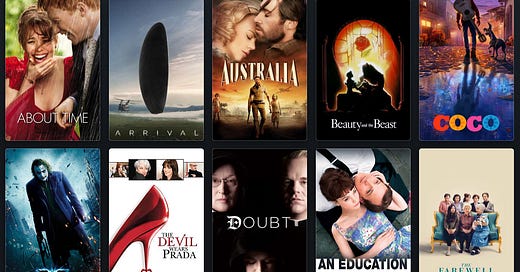I went to the movie theater to see the latest cultural craze: Sinners. I had high expectations, as many cinephiles are already placing it on their “best of the year” lists and predicting it will be a Best Picture nominee at the 98th Academy Awards next year. To say I left disappointed would be an understatement—not just because I found several frustrating flaws in the film, but because I felt my criticisms would be immediately rejected and dismissed. (This is me talking to myself, by the way.) I worried that not liking Sinners would make people question my credibility as a film lover. After all, the film wasn’t “for me,” right? And if it’s not “for me,” then any critical opinion I have shouldn’t count... right?
It was through my fear of rejection that I realized what I love most about art: conversation. I believe art has the power to do many things—foster empathy, provoke tension, and invite analysis. One of its most vital roles, in my view, is its ability to spark dialogue. This can happen between parallel perspectives or opposing ones, but the point is to engage with what we consume. The process of analyzing, interpreting, and evaluating creative work is known as art criticism, and I would argue that this practice is just as important as the art itself.
You’ve heard the arguments against art critics before: “Movie critics hate all the good movies,” “Critics criticize because they can’t create,” “What do critics know about art, anyway?” Critics have never bothered me, because I’ve always seen art criticism for what it truly is—an opinion. Art is subjective; we all know this. So then, what is the role of art criticism?
Let’s break it down into two parts. The first is art criticism through interpretation. Once an artist releases their work into the world, it no longer belongs solely to them. It was a gift granted by the cosmos, and now it’s been given away. How the audience engages with it is beyond the artist’s control. Isn’t that beautiful? Isn’t that necessary?
Art doesn’t offer right or wrong answers. If you’re searching for definitive answers, turn to math. Art lives in the blurry unknown, and that ambiguity is where its power lies. That’s the mysterious, mystical beauty of it. We must have conversations about art. How it transforms us is the true power of art.
This brings us to the second part: art criticism through critical analysis. This is where I make my case for the critics. Nearly every serious critic has a deep, abiding love for the art form—be it film, theater, or music. And if they’re any good at what they do, that love runs deeper than words can express. It’s from this love that their critical analysis emerges.
These folks are paid to offer not just an opinion on the latest piece of art, but to place that work within the broader context of the entire history of the art form. What a challenge—and what a daunting responsibility. Good critics help us make sense of the art. They contribute to the ongoing, evolving conversation that defines the medium. They help us sift through the noise, offering a sharper focus on what might be worth our limited time and attention. Of course, this is entirely subjective, which is why it’s essential to listen to more than one critic. That’s my premise: we should be listening to critics. Or at the very least, we should have our go-to two or three whose perspectives resonate with us. After all, we can’t watch, listen to, or engage with everything. That’s what they’re paid to do.
Interpretation and analysis are what make art stand out in a world of black, white, and gray. Engaging with the lives and unique experiences of people outside our own reality is crucial to gaining a more complete view of the world. Art is the physical manifestation of an artist’s reality. They are trying to make sense of their world—and inviting you to step into it.
So, do me a favor:
Watch foreign films. “Once you overcome the one-inch-tall barrier of subtitles, you will be introduced to so many more amazing films.” - Bong Joon Ho
Visit a local art gallery. It’s the living visual artists who need your support!
Read a novel. There’s nothing quite like the experience of reading, because in that space, you are silenced—you have to sit with the author’s point of view without interruption. (It’s amazing to me how many people don’t read anymore)
Follow some art critics and read their analysis. Choose a few critics whose perspectives you trust, and pay attention to their interpretations. This doesn’t mean you’ll always agree with them or follow their recommendations, but their insights can help you navigate the overwhelming amount of art being fed to us daily. You could even check me out at Letterboxd to see what I’ve been watching lately and if I think it’s worth your time.
Consuming art is not enough. We must also engage with it through analysis, interpretation, and conversation. This not only makes us better individuals but, indirectly, helps create a better world.






This was such a clarifying and necessary piece. I’ve been wrestling with the tension between creation and critique myself—how to stay tender in the act of making while not shying away from sharpening the eye. I love the idea of criticism as a generative form of attention rather than judgment. There’s a care in that framing that feels especially important right now, when so much feedback is either hollow praise or performative takedown.
Thank you for writing with both precision and generosity. It gave me language for something I’ve felt but hadn’t articulated yet.